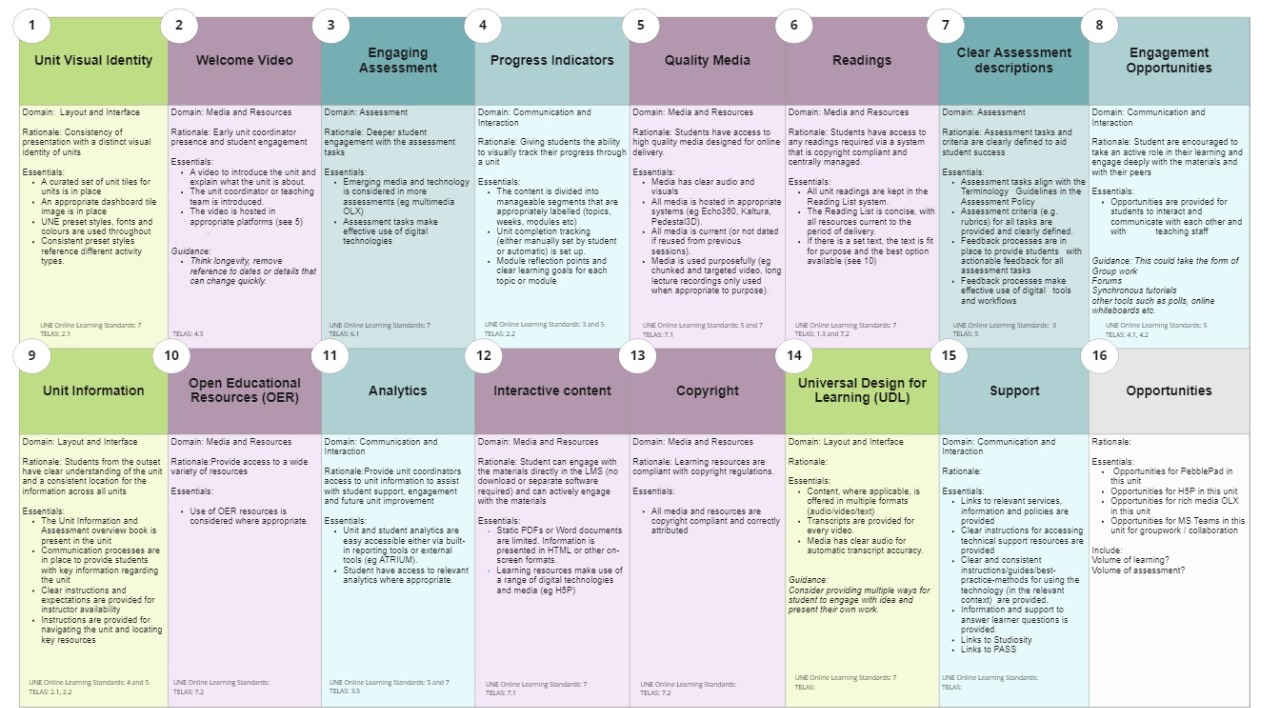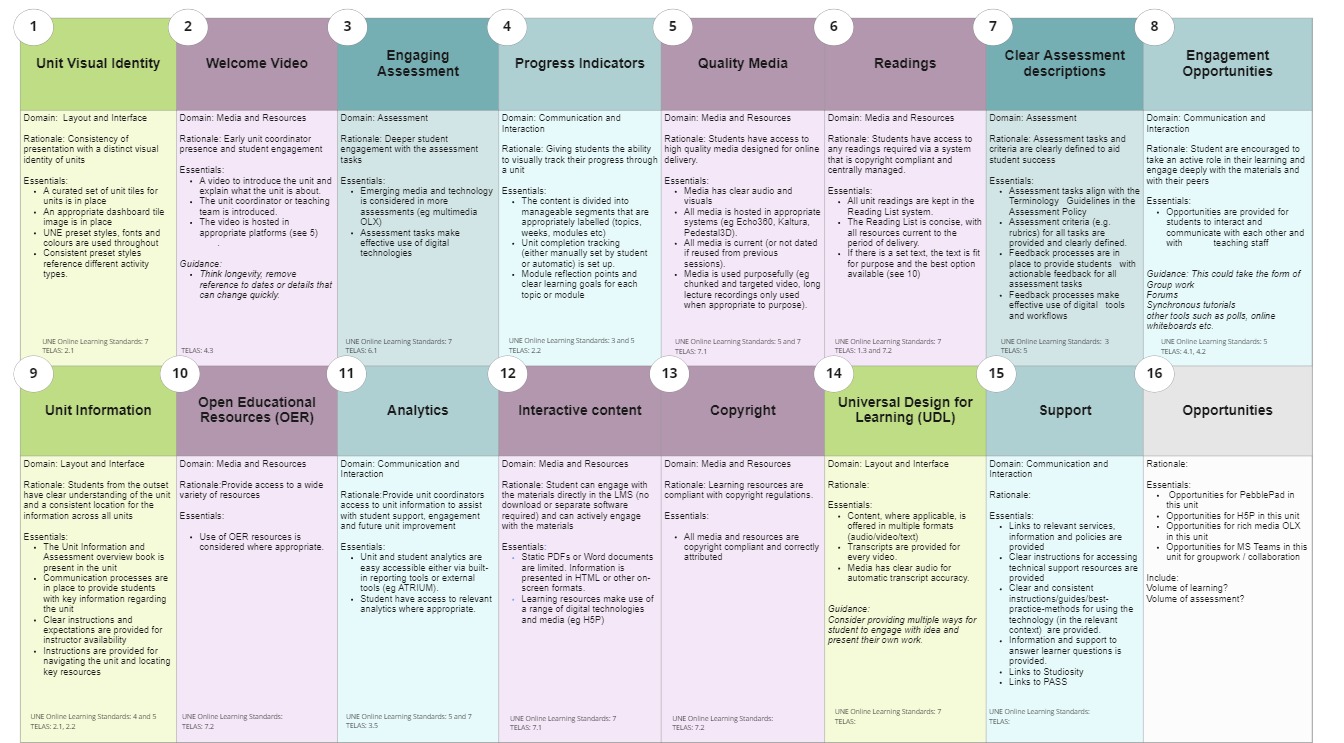

This element focuses using UNE learning systems to assist with student support, engagement and future unit improvement. Analytics can be utilised through the internal LMS system and through external supported system such as ATRIUM.
UNE learning supported systems collate a vast range of data that can be used to benefit learners, teachers, administrators, learning and curriculum designers.
Benefits of analytics include:
Leaners:
Teachers:
Administrators:
Learning/curriculum designers:
(Adapted from Collins, 2022)
The value of analytics is dependent on how the data is used as well as the data that is collected. This means that analytics should lead to action to enhance learning opportunities.
A simple measure of an institution’s analytics capability is its demonstrated ability to seamlessly move from data to analysis to action. (Norris et al., 2008, pp. 56–57)
This element relates to the following research and practice informed guidelines/ frameworks:
TELAS Guidelines
UNE Learning Standards
Some things you can do include:
Tips for tracking inactive students with ATRIUM Digital Education @ UNE Blog
Learning Futures Roadshow #1 – Learning Analytics. Digital Education @ UNE Blog
Video: Small data and ‘person-alisation’ – how relationships and engagement drive learning analytics at the University of Sydney. Digital Education @ UNE Blog
Introduction to Atrium – recording of recent introduction session. Digital Education @ UNE Blog
Webinar: Showcasing the Atrium Retention Platform – Monday, 20th June. Digital Education @ UNE Blog
Teaching Online @ UNE contains information on learning analytics.
Contact the Learning Design team for specific unit related guidance and advice: learningdesign@une.edu.au
Collins, B. (2022, January 18). Harnessing the Potential of Learning Analytics Across the University. Wiley University Student Support Services. https://universityservices.wiley.com/potential-for-higher-education-learning-analytics/
Norris, D., Baer, L., Leonard, J., & Pugliese, L. (2008). Action Analytics: Measuring and Improving Performance That Matters in Higher Education. EDUCAUSE Review, 43(1), 42–67.
TELAS Framework https://www.telas.edu.au/framework/
UNE Online Learning Standards: https://myune.sharepoint.com/sites/academic-transformation/SitePages/Principals-for-Designing-Learning-Experiences-Online.aspx
Domain: Communication and Interaction
Rationale: Provide unit coordinators access to unit information to assist with student support, engagement and future unit improvement
Essentials:
Standards: